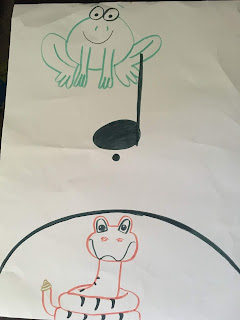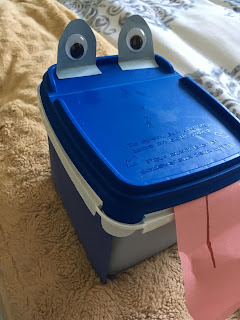Let's talk about the hardest part of the job (whether you're the parent or the teacher): ATTENTION. You have 5,
maybe 8, minutes before the preschooler is running for the next thing. It's exhausting just watching them, let alone trying to corral all that energy into something instructive. So how do you keep your students' attention throughout the lesson?
I've found the best way to keep young students' attention is to keep the lesson as physically active as possible. When young kids are sitting at the piano, they often lose focus within minutes because they want to play. So use that energy to your advantage! I like to do an active game, then play at the piano for a minute, then another active game. It also helps if you mix an active game with playing the piano (i.e. have kids find a hidden dynamic symbol (
f) and then have them run to the piano to play loud). Look throughout the site for some interactive game ideas.
Young students have so much excitement for learning to play the piano! Most young students come running in to the room because they can't wait to play and learn. Keep that enthusiasm up from the very beginning of the lesson by letting them feel like they control what they're learning. Give them a choice of what they want to do first. I like to have the activities out on the table so that my students can come and look at what they have to look forward to.
Variety is good, but it's easy for kids to get overwhelmed. Change up games and lessons, but keep at least one tried and true lesson around every day. I like to use the Hippo Helper or Crab Pom-Poms each day. This helps kids to have a little bit of a routine so they know what they're supposed to do.
Kids get distracted. *Gasp* 😲😲😲😲 I'll just pause for a minute. Let that sink in. Over the shock? Okay. So you're sitting in the lesson and have spent so much time and effort in preparing these fun lessons. The student is having fun and learning. And suddenly, in the very middle of the lesson, your student decides to jump ship. DON'T PANIC! Often we think that our students need to completely finish the lesson for them to understand the concept. But kids stay focused as long as they feel like they're learning something and having fun. So when they stop the game, they're letting you know that they've learned the concept well enough to move on for now. Come back to it later. Move to the next activity. Let your student dictate how long they want/need to practice certain concepts.
Recap:
1. Physically active games throughout the lesson
2. Give students a choice
3. Always keep at least one old game/lesson
4. When your student gets bored, MOVE ON
Have you found other ways to keep young students' attention throughout the whole lesson? Let us know what works for you!
























